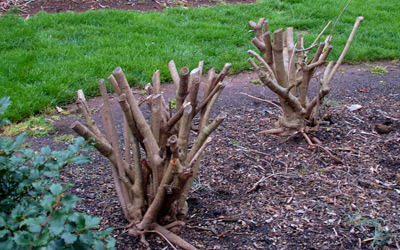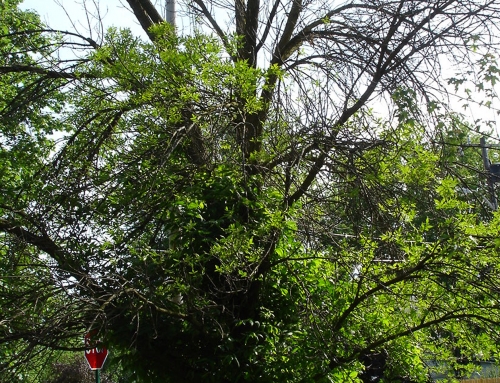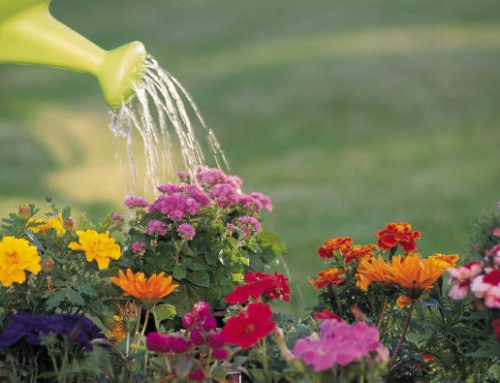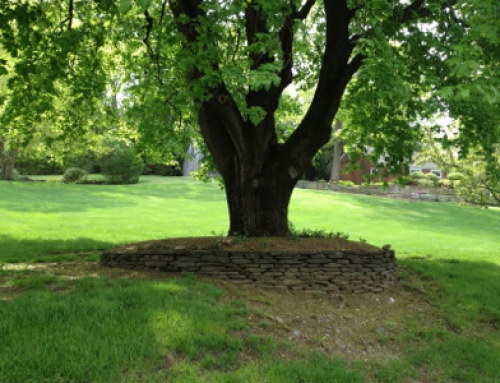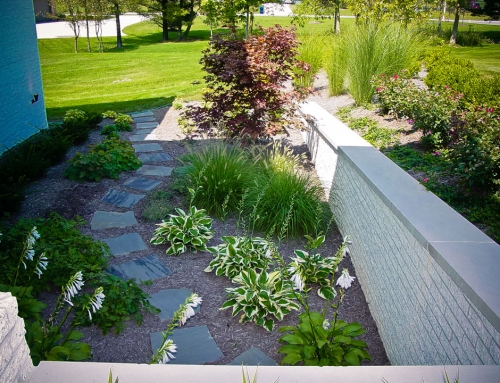Rejuvenation Pruning
Do you have a shrub that’s so overgrown that it’s growing into your house, impeding on a walkway, or growing into other plants? Before removing the shrub, consider rejuvenation pruning. There are two types of rejuvenation pruning. The first type, extensive rejuvenation pruning, is the practice of cutting the whole shrub to a height of 4-10 inches. After the cut, the shrub will immediately start growing new, healthy, vigorous shoots which give the shrub a new, manageable look with increased flowering. Examples of shrubs that respond well to extensive rejuvenation pruning are: dogwood, spirea, potentilla, honeysuckle, hydrangea, lilac, forsythia, and weigela.
If you don’t like the drastic visual change that extensive rejuvenation pruning results in, there is a second type of rejuvenation pruning called gradual rejuvenation pruning. Over a period of three years, you gradually remove 1/3 of the oldest stems every year until you have a fully rejuvenated shrub. This method takes longer to complete, but will leave you with a shrub that stays more attractive throughout the rejuvenation period. Using both rejuvenation pruning methods will leave you with the same result; a new, vigorous, healthy plant which can be easily maintained in its natural form. Most of the shrubs that respond well to extensive rejuvenation pruning will also respond well to gradual rejuvenation pruning. Some different shrubs that respond better to gradual rejuvenation pruning are: purple sand cherry, cotoneaster, burning bush, many viburnum, and with hazel.
There are a few things to keep in mind with rejuvenation pruning:
- Not all shrubs respond well. Avoid rejuvenation pruning to junipers, boxwood, narrow leaved evergreens, and shrubs that have only one primary trunk. Spring flowering shrubs won’t flower the year the rejuvenation cut is made.
- Timing is important. Although rejuvenation pruning can be done with some shrubs right after flowering, the best time is late winter of right before bud break.
- Give special attention to heavily pruned shrubs. Do to the stress that some shrubs receive during heavy cutbacks, watering and fertilizer can be very important.
Rejuvenation pruning and renewal pruning are two techniques that can reduce the size and volume of many shrubs without unduly harming them. Which is more appropriate in a given situation will depend on the plant species, the shrub’s function in the landscape, and the wishes of the property owner.
Lilacs following rejuvenation pruning and regrowth
Shrubs are important components of residential and public landscapes. They are used to block views, create privacy, establish borders, and provide interesting foliage and flowers. Too often, shrubs are planted and then allowed to grow with little or no management. If pruned at all, they are typically subjected to periodic shearing. Eventually many shrubs grow too big for their site or for the plant structure itself. Now that winter is over, we see them everywhere we look: big, unruly, overgrown shrubs.
Rejuvenation Pruning
Rejuvenation pruning is the more severe of the two techniques, and not all species can tolerate it. Plants that are stressed or in poor health may not survive this severe level of pruning. In rejuvenation pruning, the shrub is pruned by cutting off all old branches at or near ground level. Healthy shrubs will respond by sending up multiple new shoots, and these will need to be thinned to reduce competition and maintain the natural form of the shrub. One benefit of rejuvenation pruning is its immediacy; when the job is done, that ugly overgrown shrub is literally gone. This is, of course, also a drawback since what is left behind is an unsightly stump, at least until new growth ensues.
Deciduous shrubs that can tolerate rejuvenation pruning include Tartarian and redstem dogwood, forsythia, rose of Sharon, hydrangea, privet, honeysuckle, elderberry, spirea, and lilac. Butterfly bush and Chastetree (Vitex) can be pruned annually in this manner once we are past danger of a hard frost. Callicarpa can be rejuvenated by pruning to 12 inches rather than cutting at ground level. Evergreen shrubs will not tolerate rejuvenation pruning.
Renewal Pruning
Renewal pruning is a gentler approach to dealing with an overgrown shrub, but it is a process that takes several years. In renewal pruning, about one-third of older wood is removed each season over three years, primarily by using thinning cuts back to the crown or main stem. This approach maintains the overall shape of the shrub while reducing its volume and height over time. In response to this pruning, and as light is allowed to penetrate the canopy, many new shoots may be initiated. As in rejuvenation pruning, these new shoots will need to be thinned. Although renewal pruning takes longer to complete, the visual impact on the landscape is much less than rejuvenation pruning.
Many deciduous shrubs respond well to renewal pruning, including barberry, beautybush, cinquefoil, pyracantha, forsythia, honeysuckle, hydrangea, lilac, mockorange, privet (use a 4-year cycle), flowering quince, spirea, and weigela. Renewal pruning can also be used on some evergreen shrubs such as boxwood, cherry laurel, and rhododendron.
They say that an ounce of prevention is worth a pound of cure, and avoiding the problem of overgrown shrubs is easy to do. First and foremost, make sure to fit the plant to the site. Don’t force a shrub species to fit into a space that is too small for its natural growth pattern or vigor. Then maintain the proper size of shrubs using appropriate thinning and heading cuts as needed to manage shrub growth, size and health.

